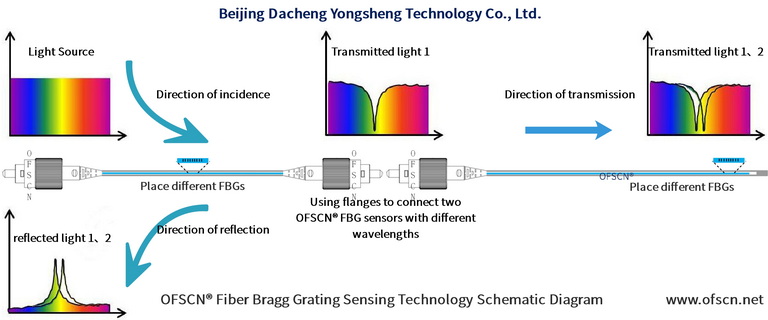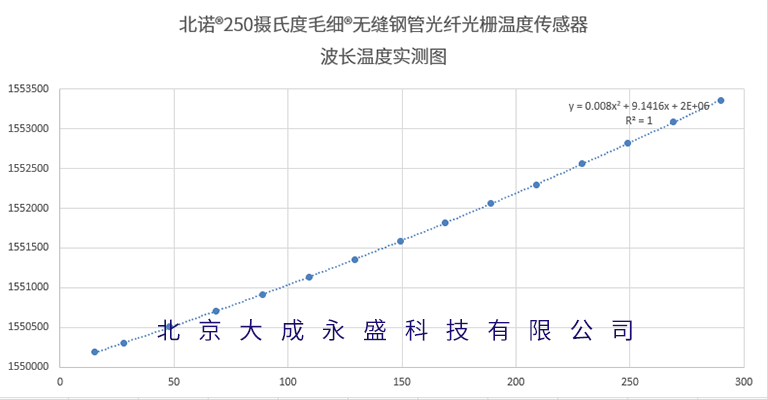This article introduces the temperature compensation methods and principles for FBG stress sensors and answers the question, "Is FBG stress measurement sensitive to temperature?" It also highlights the accuracy of OFSCN® Capillary Seamless Steel Tube Fiber Bragg Grating Temperature Sensors, which can be used for temperature compensation in FBG stress sensors and other types of FBG sensors. Additionally, it provides the temperature compensation scheme offered by DCYS.
1. Temperature Compensation Principle Formula and Diagram for Fiber Bragg Grating Stress Sensors
Fiber Bragg gratings (FBGs) are sensitive to both stress and temperature. Any change in stress or environmental temperature results in a variation of the grating pitch (grating period) on the FBG. This change in grating pitch corresponds to a stress experienced by the FBG sensor.
This implies that when using FBG stress sensors for accurate measurements, it is essential to consider whether the environmental temperature has changed.
In order to achieve accurate measurements, the impact of temperature on the reflected wavelength needs to be compensated. In other words, ΔT should be zero or known in the formula ΔλB = λB(1 - Pe)Δε + λB(αf - ξ)ΔT. This process is referred to as temperature compensation for FBG stress sensors.
 |
|
Figure 1 |
The best method for temperature compensation in FBG stress sensors is to incorporate a temperature sensor with accurate measurements (which can be serially or parallelly connected to the system) into the tested object or environment.
Since the FBG stress sensor and the FBG temperature sensor are exposed to the same temperature environment, the temperature measured by the FBG temperature sensor can be considered as the temperature of the FBG stress sensor. By subtracting the influence of temperature on the reflected wavelength in the formula ΔλB = λB(1 - Pe)Δε + λB(αf - ξ)ΔT, an accurate strain value can be obtained.
2. Physical Diagrams and Calibration of FBG Stress Sensors for Temperature Compensation
 |
| Figure 2 |
 |
|
Figure 3 |
 |
|
Figure 4 |
DCYS's OFSCN® Capillary Seamless Steel Tube Fiber Bragg Grating Temperature Sensors utilize unique patented technology and feature small size and dimensions. They can be inserted into the tested object or environment with minimal impact and provide accurate temperature measurements.
 |
|
Figure 5 |
Our philosophy is: "OFSCN®, make optical fiber stronger!"
